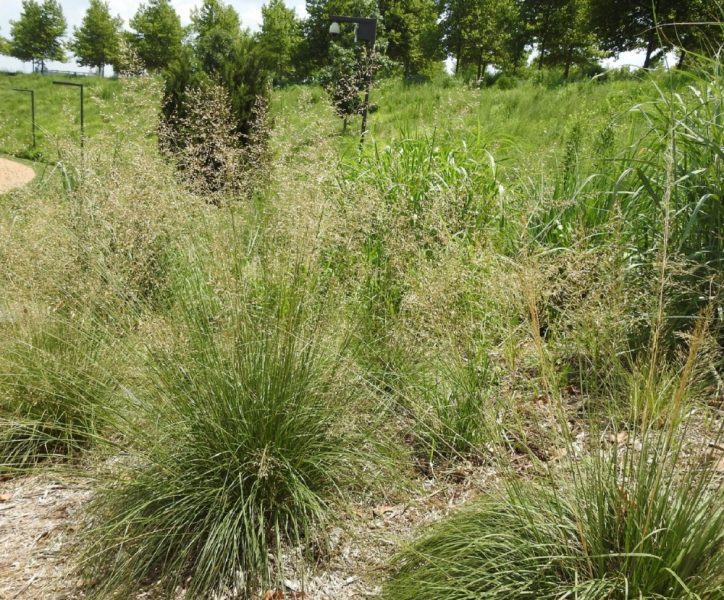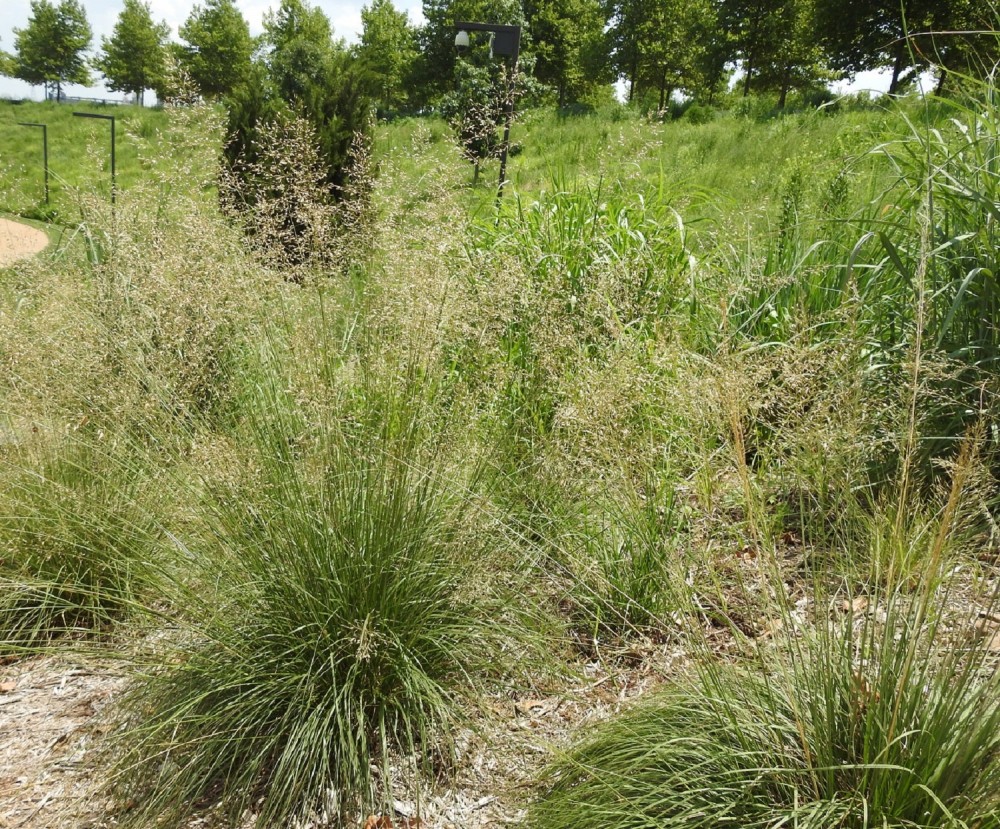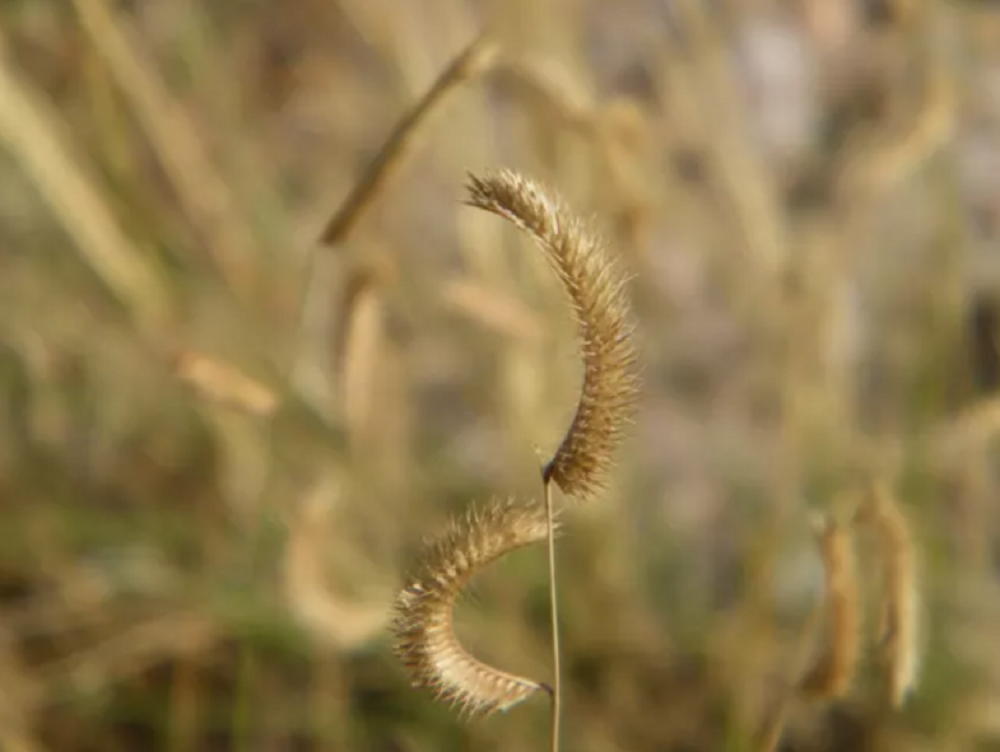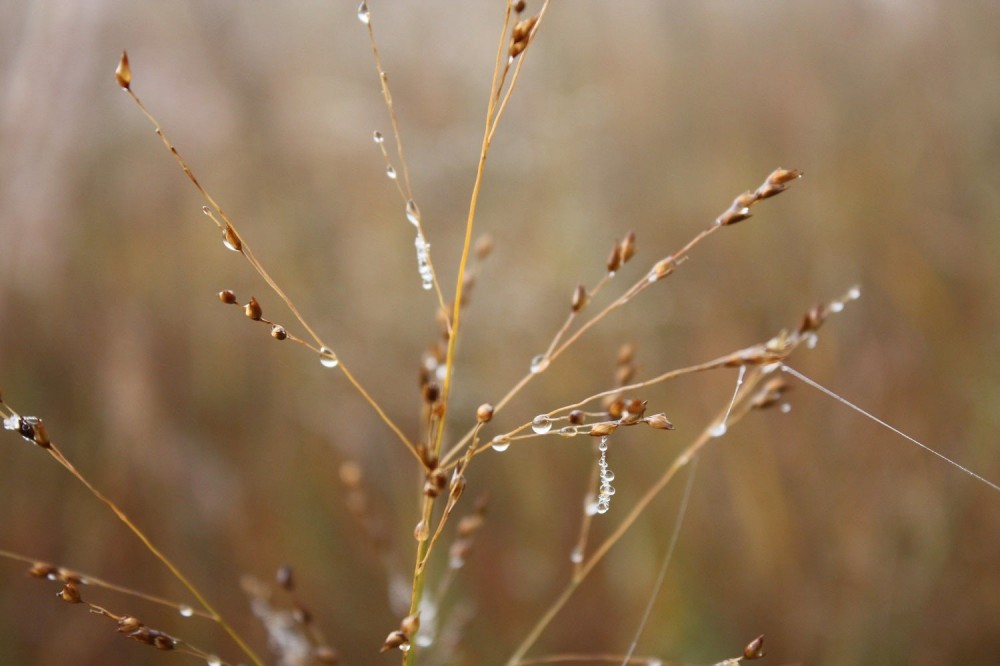9 native grasses that will revitalize your sad, water-wasting lawn

The most irrigated crop in the US isn’t a particularly tasty one. Nationwide, lawn grass takes up a total area bigger than the size of Georgia, and requires more than 300 gallons of watering per household a day. “These turf grasses have really short roots, so they require nearly a constant input of water,” says Becky Barak, a conservation scientist at the Chicago Botanic Garden and leader of the Rethinking Lawns Project.
The traditional American lawn, which often holds non-native species from Africa, Asia, and Europe, can be great for kids and dogs to run around on. But there are tons of native plantings that decrease water and pesticide use, reduce time and energy spent on mowing, absorb stormwater, and provide real habitat for wildlife. Not to mention, they make an incredible backdrop in the process. “Some native grasses can be mowed to look more like traditional turf grasses,” Barak says. “But then there are others that are beautiful and can add so much visual appeal and a totally different look.”
When it comes to choosing types of grass, there are thousands of choices. “They can be all different colors of the rainbow,” Barak says. That might sound overwhelming, but don’t worry—you can narrow down the list by browsing local native nurseries and regional university guides. (Remember to check the soil type in your yard and find plants that match.) Once you have some options that work for your space, no matter how tiny, you’ll be well on your way to creating the native landscape of your dreams. Here are nine beloved varieties to get you started.

Short grasses
Buffalo grass (Bouteloua dactyloides)
- Native range: Central US
- Height: 3 to 10 inches
- Light: full sun
- Water use: low to medium
If you’re looking for a native grass that still keeps the lawn feel, look no further than buffalo grass. Named after the American bison that once grazed all over the Great Plains, this drought-tolerant turf grass is a popular choice for lawns for its sod-forming abilities. You can mow it infrequently or never if you prefer the slightly taller look. Although buffalo grass can survive without irrigation, it may lose some of its color in periods of drought and dormancy. Mix the seeds with other low-growing options for sustained greenery, or consider using a buffalo grass cultivar that’s bred for more consistent color.
Curly mesquite grass (Hilaria belangeri)
- Native range: Southwestern US
- Height: 4 to 12 inches
- Light: full sun
- Water use: low
Another popular turf grass for drought tolerance, this species is the perfect choice for desert and desert-like environments. It’s considered to be one of the best lawn options out of native grasses in the US, though its range is limited to Arizona, New Mexico, and Texas. Curly mesquite grass can grow in a variety of well-drained soils but works best in clay loam.
Pennsylvania sedge (Carex pensylvanica)
- Native range: Eastern and Midwestern US
- Height: 6 to 12 inches
- Light: part to full shade
- Water use: low to medium
Although Pennsylvania sedge isn’t technically a grass, its grass-like appearance makes it a great choice for homeowners looking to make their yard more native without losing the lush carpeted look. The plant offers good ground cover, spreads well, and deters deer from grazing. In the fall, this delicate, windswept-looking sedge turns from vibrant green to tan.

Medium grasses
Purple lovegrass (Eragrostis spectabilis)
- Native range: along the East Coast from Maine to Florida, west to Arizona
- Height: 8 to 18 inches
- Light: full sun
- Water use: low
Purple lovegrass, one of Barak’s favorites, adds the perfect pop of color to your lawn. The heat-tolerant plant really starts to shine in August, when it forms an inflorescence of purple-red flowers that seemingly float on the grass like a cloud of color. Though it can be damaged by heavy foot traffic, the grass stays relatively short, only needs to be mowed a few times throughout the year, and is deer-resistant.
“Hatchita” blue grama (Bouteloua gracilis)
- Native range: Western and Central US
- Height: 8 to 20 inches
- Light: full sun
- Water use: low to medium
Along with buffalo grass and curly mesquite grass, this type of grass completes the trifecta of popular native turf choices in the US, but is even more drought tolerant than the other two members of the big three. It’s also both cold and heat tolerant, can grow in most soils except overly wet ones, and hosts different kinds of skipper butterflies during their breeding season. In the summer, the plant displays an inflorescence of purple flowers; in fall, it turns beautiful hues like orange and red. For fuller coverage, consider combining blue grama with buffalo grass and various native wildflowers in your yard.
Muhly grass (Muhlenbergia capillaris)
- Native range: Southeastern US and the East Coast
- Height: 2 to 3 feet
- Light: full sun
- Water use: low to medium
Planting muhly grass is like setting off living fireworks on your lawn. Each fall, it blooms with feathery pink inflorescences In winter, the grass fades into a rich tan. Beyond that, it retains a gorgeous dark-green color. The plant is easy to grow and germinate and is highly deer resistant.
Prairie dropseed (Sporobolus heterolepis)
- Native range: Great Plains
- Height: 2 to 3 feet
- Light: full sun
- Water use: low to medium
Another one of Barak’s favorites, prairie dropseed’s flowing green clumps make it the perfect accent or border grass—but that’s not the only fun part. When it begins to pop around June, the grass produces small pink and brown flowers that smell like coriander, licorice, or popcorn. It maintains its shape outside of the warmer seasons, even when blanketed by snow. This slow-growing type of grass is also a great choice if you’re looking to make your yard more pollinator-friendly, as they provide nesting materials for native bees.

Tall grasses
Little bluestem (Schizachyrium scoparium)
- Native range: everywhere in the US except the West Coast
- Height: 2 to 7 feet
- Light: full sun
- Water use: low to medium
Despite its name, this drought-resistant grass is rather tall, making it a great choice to add dimension to a yard or garden. Little bluestem also boasts, you guessed it, a beautiful blue hue in summer before turning copper in the fall. Loved by homeowners (including Barak) and animals alike, this grass attracts birds and butterflies and provides nesting materials for native bees. On the flip side, you might catch a few deer visiting your new bluestem buffet.
Switchgrass (Panicum virgatum)
- Native range: everywhere in the continental US except California, Idaho, Oregon, and Washington
- Height: 3 to 10 feet
- Light: full sun to part shade
- Water use: medium
If you want to make your home feel like the little house on the prairie, or if you’re just looking for some privacy, this one’s for you. Switchgrass, known for its natural presence in American tallgrass prairie, paints a bright green swath across the landscape. The tall plant produces airy pinkish masses of flowers in summer before transforming to bright yellow in fall. This grass is also highly deer resistant and is an essential host for several species of butterflies and their young.
Correction (May 23, 2023): Due to an editing error, the caption for the blue grama photo was originally mislabeled as little bluestem.










